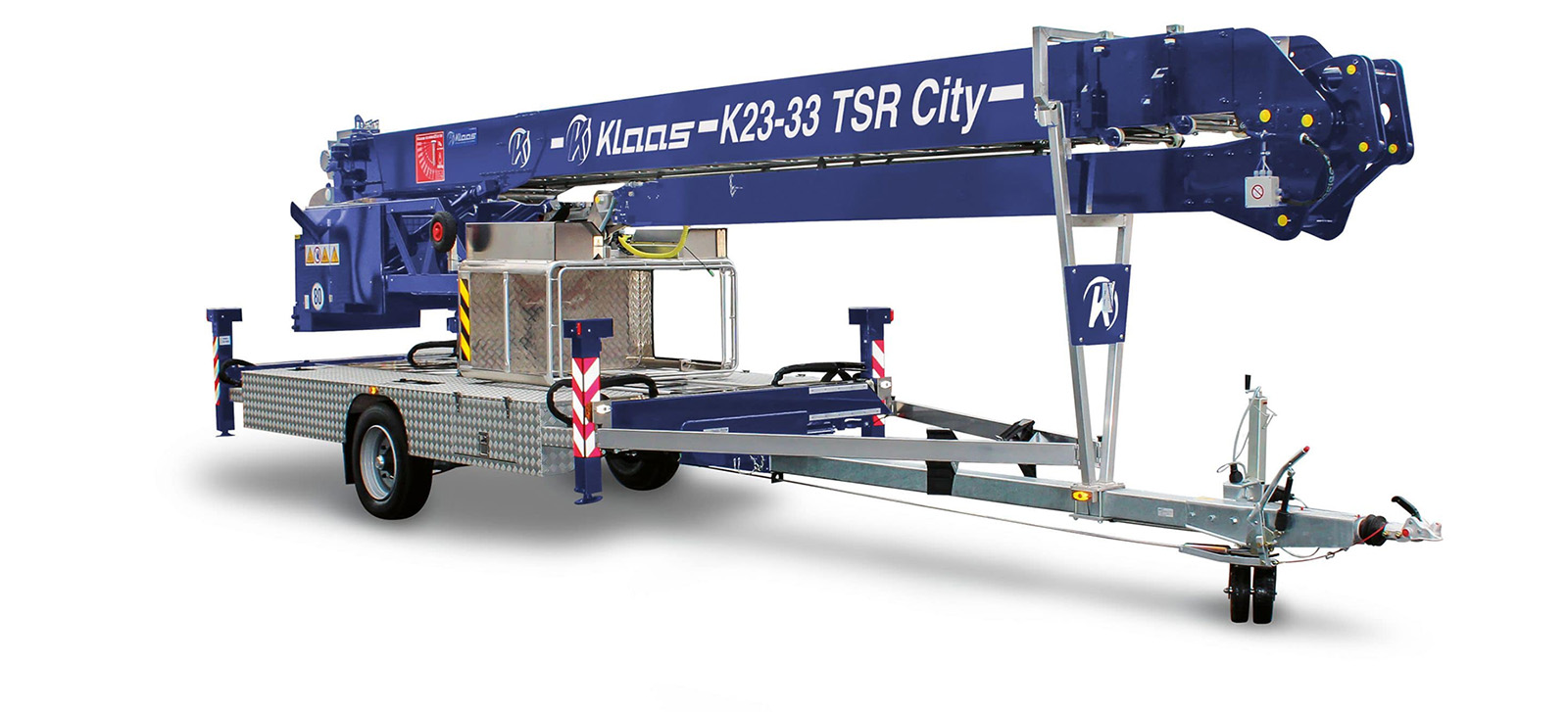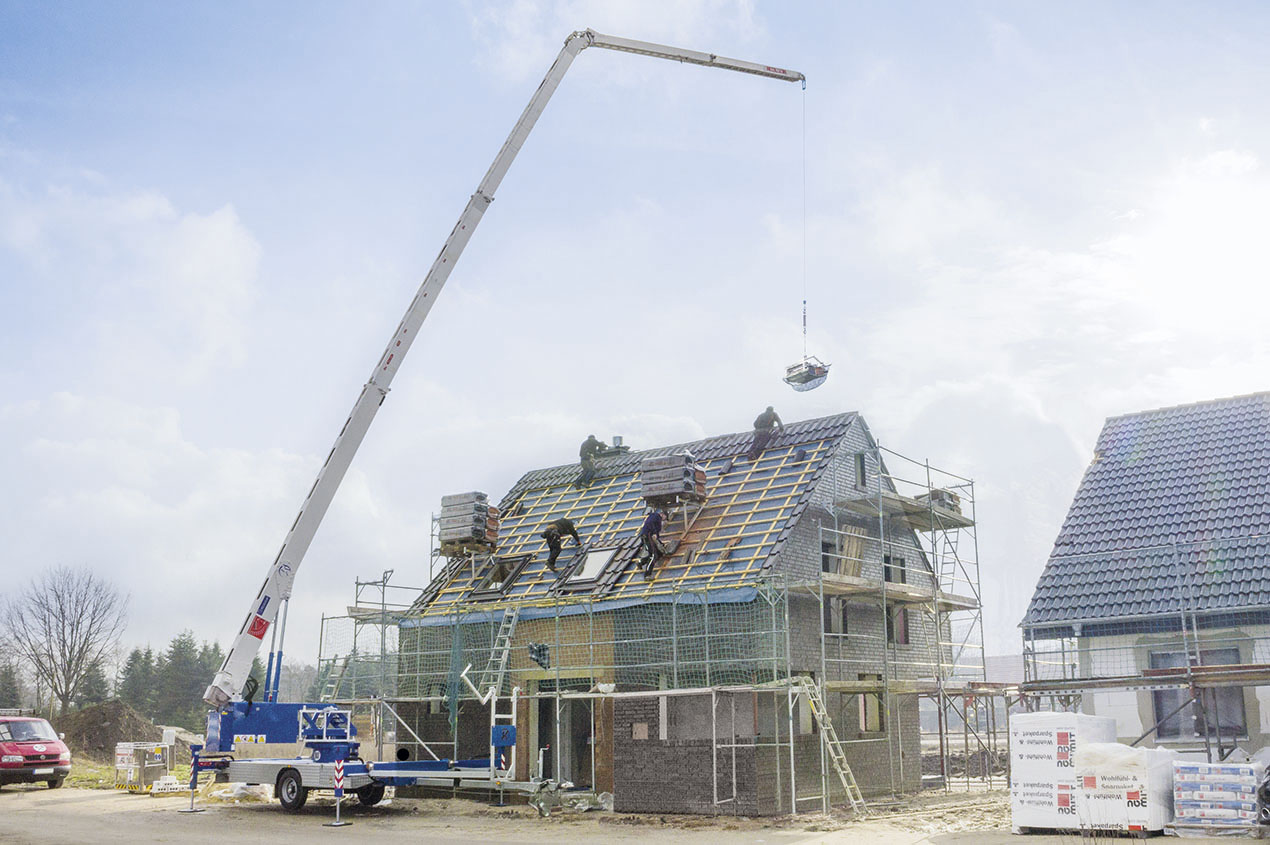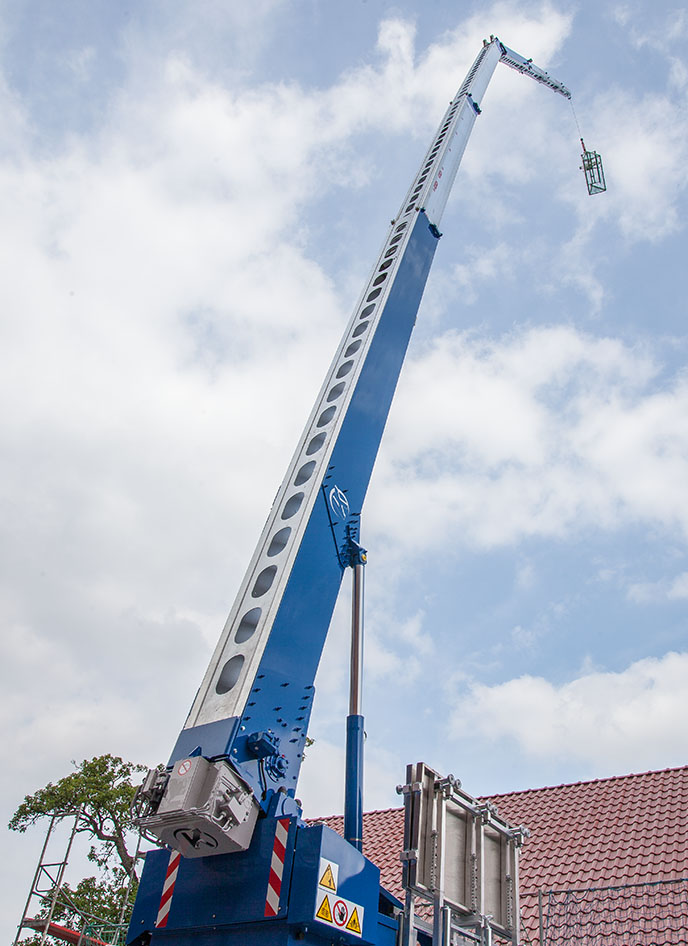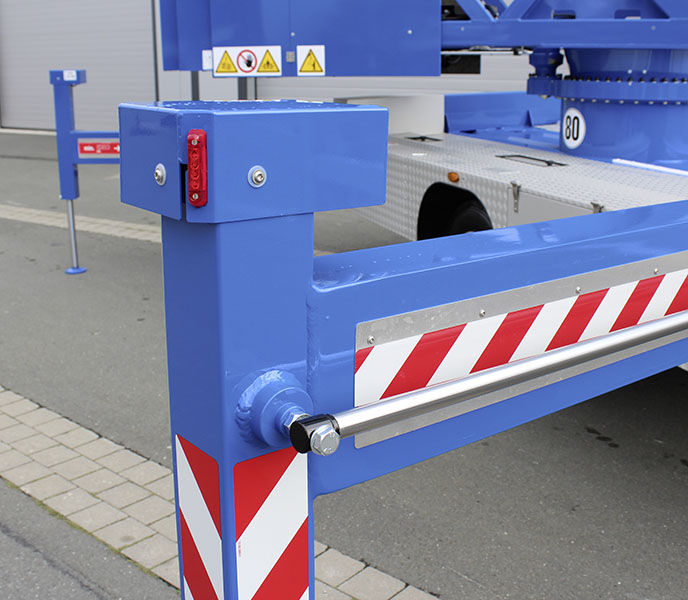| < 2.6 t | ≥ 3.5 t | ||||||||||
 |
 |
 |
 |
||||||||
| K17-24 TSR | K21-30 TSR | K23-33 TSR City | K400 RSX | ||||||||
| PERFORMANCE VALUES | |||||||||||
| Hook load (stand./opt.) | 800 / – kg | 1.500 / – kg | 1.500 / – kg | 1.600 /3.000 kg | |||||||
| Hook height | 24.0 m | 29.8 m | 32.8 m | 31.8 m | |||||||
| Range (250 kg) | 18.0 m | 21.0 m | 23.0 m | 23.0 m | |||||||
| Range (800 kg) | 6.0 m | 9.5 m | 9.5 m | 9.5 m | |||||||
| Range (1.000 kg) | – | 8.0 m | 8.5 m | 9.5 m | |||||||
| Range (1.500 kg) | – | 4.5 m | 4.5 m | – | |||||||
| Range (1.600 kg) | – | – | – | 5.0 m | |||||||
| Detail | Detail | Detail | Detail | ||||||||
 |
Thought out in detailKlaas trailer cranes show off their strengths in the inner-city area and on building sites with tight access conditions. This means they can be set up in inner courtyards or inside large buildings if narrow driveways make it impossible to set up a mobile crane. They too are equipped with the Klaas aluminium mast, which combines a low net weight with high reach values. Thanks to the remote-controlled self-drive mechanism, the trailers can be effortlessly manoeuvred even in tight spaces. |
 |
The Klaas mast systemThe most striking trademark of a Klaas crane is its boom. This consists of high-strength aluminium profiles made from a special alloy and is produced in the stir welding process. It thus provides a strength as if milled from solid metal, a long service life and low maintenance costs. Its low net weight ensures outstanding reach values, as every kilogram less in the mast benefits the range and load capacity. The patented Klaas winch technology enables quick and secure telescoping under load – even when the mast is inclined at a flat angle. Four telescope cables are assembled on a single drum, whilst the track system is fixed into the cable technology. As the cables are guided and electrically monitored, slack ropes and skipping are prevented. An integrated electronic length measurement constantly records the current extension length of the mast and uses the data to calculate the maximum possible load capacity. Another feature of the Klaas mast is the extremely strong fly jib, which considerably increases the maximum hook height when extended and enables a lateral range of action. Roof areas at the back can be supplied with material in this way when scaffolding or eaves prevent the main mast from being extended any further. |
 |
The Klaas support systemPressing a button on the remote control starts the setting up of the crane and the automatic self-levelling. This ensures that all the supports have the same pressure and that the appliance is perfectly sturdy. Furthermore, the L-shape of the supports guarantees the best possible stability. Thanks to the fully hydraulic support system, it is possible to move each single support infinitely and accurately into position. Their long, vertical cylinders save them from being laboriously propped up on uneven terrain. As the support widths can also be infinitely adjusted, even scaffolding, hedges or narrow alleys do not create an obstacle. The ASC control system permanently monitors the stability of the appliance in crane and lifting platform mode and shows this via the remote control. At the same time it also takes changing wind or ground conditions into account. |
 |
The Klaas crane control systemEvery Klaas crane has an ultra-modern safety control system (PLC) for the crane and lifting platform mode. A modern CAN bus control block with a soft start/stop function enables particularly delicate and precise work and prevents the boom from swinging dangerously. All crane types are operated using an intelligent radio remote control system with memory function. This learns two target points and moves between these automatically and in a safe hold-to-run handling mode. This makes it easy to move to blind spots and to unload quickly at positions that are repeatedly stopped at. All the important information, such as the boom’s angle of inclination and rotation, hoisting cable speed or maximum lifting capacity, can be read at a glance on the remote control's display. It is efficiently supplied with power via standard batteries or via cables – a key plus point should the wireless network be interrupted. Klaas uses three different remote control models, ‘S’, ‘L’ and ‘XL’. These are identical in terms of their basic functions, but differ in the outer form. The standard equipment depends on the respective type of crane, but it can be replaced with another model as an option. What is more, every aluminium crane can be equipped with a second radio remote control. The benefit: in case of difficult-to-see positions, e.g. on the back of the roof, another employee can take over the control of the crane and complete the job. |

